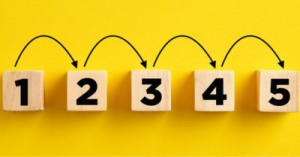Schemas are patterns of repeated behavior that allow children to explore and express developing ideas and thoughts through their play and exploration. The following article provides information on Types Of Schemas, Benefits Of Schemas, Why Schemas Are Important, Supporting Children In Their Schemas, Difference Between Schemas and Developmental Milestones, Observing Schemas, Linking Schemas To EYLF and more.
Types Of Schemas
Schemas are a key part of cognitive development, helping children to make sense of the world around them. Here are some common types of schemas observed in young children, along with activities to support each schema:
-
Trajectory Schema
-
Definition: Involves movement and exploring lines, paths, and trajectories.
-
Examples: Throwing, dropping, rolling objects, running, and jumping.
-
Activities: Playing with balls, rolling cars down ramps, flying kites, and creating obstacle courses.
-
-
Rotation Schema
-
Definition: Involves circular movements and objects that spin or rotate.
-
Examples: Twirling, spinning wheels, drawing circles.
-
Activities: Playing with spinning tops, merry-go-rounds, hula hoops, and making spiral drawings.
-
-
Enclosure/Enveloping Schema
-
Definition: Involves covering, enclosing, and enveloping objects.
-
Examples: Wrapping toys in blankets, filling and emptying containers, building enclosures.
-
Activities: Playing with nesting dolls, using boxes and containers, building with blocks, and wrapping objects in paper or fabric.
-
-
Transporting Schema
-
Definition: Involves moving objects from one place to another.
-
Examples: Carrying toys, pushing prams or wheelbarrows, transferring items.
-
Activities: Using carts, prams, and wheelbarrows, playing with toy cars and trucks, and setting up a simple transport system with tunnels and tracks.
-
-
Connection Schema
-
Definition: Involves joining or connecting objects together.
-
Examples: Building with blocks, connecting train tracks, joining pieces together.
-
Activities: Playing with construction toys like LEGO or wooden blocks, creating chains with paper clips, and connecting train tracks.
-
-
Positioning Schema
-
Definition: Involves placing objects in specific positions or arrangements.
-
Examples: Lining up toys, arranging objects in patterns, stacking.
-
Activities: Sorting and arranging toys, playing with puzzles, and creating patterns with beads or tiles.
-
-
Orientation Schema
-
Definition: Involves turning objects or oneself to view things from different angles.
-
Examples: Looking at objects from different angles, hanging upside down, turning objects around.
-
Activities: Using mirrors, playing with binoculars or magnifying glasses, and exploring different perspectives through movement.
-
Supporting Schemas
-
Observe and Recognize: Pay attention to the patterns in children's play to identify their schemas.
-
Provide Resources: Offer materials and activities that support and extend their exploration of schemas.
-
Encourage Exploration: Allow children the freedom to explore and express their schemas through play.
-
Engage and Extend: Interact with children during their play to extend their learning and provide new challenges.
Understanding and supporting schemas in young children can enhance their cognitive development and provide meaningful learning experiences through play.
Benefits Of Schemas
Schemas offer numerous benefits for young children's cognitive and overall development. Here are some of the key benefits:
1. Enhanced Cognitive Development
-
Understanding Concepts: Schemas help children develop a deeper understanding of various concepts such as cause and effect, spatial relationships, and classification.
-
Example: A child repeatedly dropping objects learns about gravity and object permanence.
2. Problem-Solving Skills
-
Exploration and Experimentation: Schemas encourage children to explore and experiment, fostering their problem-solving abilities.
-
Example: A child figuring out how to fit different shapes into a shape sorter enhances their spatial reasoning.
3. Language Development
-
Communication: Engaging in schematic play provides opportunities for children to develop and use language as they describe their actions and ideas.
-
Example: A child playing with blocks may use words to describe their constructions, enhancing their vocabulary.
4. Emotional Regulation
-
Consistency and Predictability: Schemas offer a sense of consistency and predictability, helping children feel secure and in control.
-
Example: Engaging in familiar patterns of play can provide comfort and stability, aiding emotional regulation.
5. Physical Development
-
Fine and Gross Motor Skills: Many schemas involve physical activities that enhance both fine and gross motor skills.
-
Example: A child engaging in a rotation schema by spinning toys develops coordination and control.
6. Creativity and Imagination
-
Imaginative Play: Schemas encourage imaginative play, allowing children to explore different roles and scenarios.
-
Example: A child using a transporting schema by moving objects around the room may engage in imaginative play, such as pretending to be a delivery person.
7. Social Skills
-
Collaboration and Interaction: Schematic play often involves social interactions, helping children develop important social skills.
-
Example: Children working together on a connecting schema to build a structure with blocks learn cooperation and communication.
8. Focused Attention and Perseverance
-
Concentration: Engaging in schemas requires sustained attention and focus, helping children develop perseverance and concentration.
-
Example: A child repeatedly practicing a trajectory schema by rolling balls down a ramp demonstrates focused attention.
9. Understanding the World
-
Exploration: Schemas help children make sense of the world around them by allowing them to explore and interact with their environment in meaningful ways.
-
Example: A child using an enclosure schema to build a fort gains an understanding of spatial boundaries and structures.
By recognizing and supporting schemas, educators and parents can provide rich, meaningful learning experiences that promote various aspects of development.
Why Are Schemas Important In Early Childhood
Schemas play a vital role in early childhood development for several reasons:
1. Cognitive Development
-
Understanding and Learning: Schemas help children explore, understand, and make sense of the world around them. By engaging in repeated actions and behaviors, children develop critical thinking and problem-solving skills.
-
Example: A child repeatedly filling and emptying containers learns about volume and measurement.
2. Exploration and Discovery
-
Curiosity and Experimentation: Schemas encourage children to experiment and explore different aspects of their environment. This hands-on learning is essential for cognitive growth.
-
Example: A child exploring a rotation schema by spinning objects learns about circular motion and balance.
3. Emotional Security
-
Predictability and Routine: Engaging in schema-based play provides children with a sense of predictability and routine, which helps them feel secure and in control.
-
Example: A child repeatedly enacting the trajectory schema by rolling balls down a ramp finds comfort in the familiar activity.
4. Language Development
-
Communication Skills: As children engage in schematic play, they often describe their actions and ideas, which supports language development.
-
Example: A child explaining how they are constructing a tower using a connecting schema improves their vocabulary and communication skills.
5. Physical Development
-
Fine and Gross Motor Skills: Many schemas involve physical activities that enhance both fine and gross motor skills.
-
Example: Transporting objects from one place to another helps children develop coordination and muscle control.
6. Social Skills
-
Collaboration and Interaction: Schematic play often involves social interactions, helping children develop important social skills like sharing, taking turns, and working together.
-
Example: Children working together on a positioning schema to arrange objects in a specific order learn cooperation and teamwork.
7. Imagination and Creativity
-
Innovative Thinking: Schemas allow children to use their imagination and creativity as they explore different ways to engage in play.
-
Example: A child using an enveloping schema to wrap toys in fabric demonstrates creative problem-solving.
8. Emotional Regulation
-
Expressing Emotions: Engaging in familiar schema-based activities can help children regulate their emotions and reduce stress.
-
Example: A child repeatedly engaging in a comforting schema, such as spinning or rocking, can calm themselves and manage their emotions.
9. Understanding Cause and Effect
-
Logical Thinking: Through repeated actions, children learn about cause and effect, which is a fundamental concept in logical thinking.
-
Example: A child consistently knocking over a stack of blocks learns about gravity and consequences.
By recognizing and supporting schemas, educators and parents can provide rich, meaningful learning experiences that cater to children's natural curiosity and developmental needs. This approach helps create a solid foundation for future learning and growth.
The Difference Between Schemas and Develomental Milestones
Schemas vs. Developmental Milestones
Understanding the difference between schemas and developmental milestones is essential for supporting young children's growth. Both are vital concepts in early childhood education, but they serve different purposes.
Schemas
Definition: Schemas are patterns of repeated behavior that children use to explore and express ideas and concepts. They are dynamic and can change over time as children develop new interests and abilities.
-
Nature: Intrinsic and driven by the child's interests and exploration.
-
Examples: A child repeatedly dropping objects to explore the trajectory schema or enclosing objects in containers to explore the enclosure schema.
-
Purpose: Schemas help children make sense of the world, test theories, and understand concepts through play and exploration.
-
Observations: Teachers and caregivers observe these patterns to provide materials and activities that support children's interests.
Developmental Milestones
Definition: Developmental milestones are specific skills or behaviors that most children exhibit at certain ages. They are more rigid and serve as benchmarks to assess a child's overall development.
-
Nature: Age-specific and standardized across a population.
-
Examples: Sitting up, walking, first words, recognizing colors, and categorizing objects.
-
Purpose: Milestones are used to monitor typical development and identify potential delays or concerns.
-
Assessment: Healthcare providers, teachers, and caregivers use these milestones to track progress and ensure children are developing as expected.
Key Differences
-
Focus:
-
Schemas: Focus on the child's interests and the ways they engage with and explore their environment.
-
Milestones: Focus on age-specific achievements that are expected to occur at certain stages.
-
-
Flexibility:
-
Schemas: Highly flexible and can vary greatly between children. They are unique to each child's way of thinking and learning.
-
Milestones: Standardized and relatively rigid. They provide a general framework for typical development.
-
-
Usage:
-
Schemas: Used by educators to tailor learning experiences that align with individual children's interests and strengths.
-
Milestones: Used by healthcare providers and educators to assess and monitor overall development and identify potential delays.
-
-
Examples:
-
Schemas: Transporting objects, rotating toys, filling and emptying containers.
-
Milestones: Crawling by 9 months, walking by 12-15 months, speaking in full sentences by 3 years.
-
Benefits of Understanding Both
-
Holistic Support: Recognizing both schemas and developmental milestones provides a comprehensive understanding of a child's development, allowing for tailored support and interventions.
-
Early Intervention: Monitoring developmental milestones helps identify potential developmental delays early, leading to timely interventions.
-
Individualized Learning: Understanding schemas enables educators to create engaging and meaningful learning experiences based on each child's unique interests and ways of thinking.
By integrating the knowledge of schemas and developmental milestones, educators and caregivers can better support the holistic development of young children, ensuring they grow into well-rounded individuals.
Observing Schemas
Observing schemas in children involves paying close attention to the patterns of behavior they exhibit during play and daily activities. Here are some practical steps and tips for observing schemas effectively:
Steps for Observing Schemas
-
Watch Closely
-
Detailed Observation: Spend time watching children during free play and structured activities to identify patterns in their behavior.
-
Example: Notice if a child frequently lines up toys, drops objects, or spins wheels.
-
-
Document Play
-
Record Behaviors: Use various forms of documentation like notes, photos, or videos to capture moments that indicate a schema.
-
Example: Take photos of a child repeatedly filling and emptying containers to identify a possible transporting schema.
-
-
Avoid Assumptions
-
Consistent Observation: Consistently observe over time before concluding that a specific behavior is a schema.
-
Example: A child may drop objects once out of curiosity, but if they do it repeatedly, it likely indicates a trajectory schema.
-
-
Collaborate with Colleagues
-
Share Observations: Discuss your observations with other educators to gain different perspectives and deeper understanding.
-
Example: Compare notes with colleagues to see if they notice the same patterns of behavior in the child.
-
-
Analyze Patterns
-
Identify Themes: Look for recurring categories of behavior to identify the underlying schema.
-
Example: If a child often stacks and arranges objects in specific orders, they might be exploring a positioning schema.
-
-
Consider Developmental Milestones
-
Align Observations: Relate observed schemas to developmental milestones to understand the child's growth and learning.
-
Example: A child engaging in a connection schema by linking train tracks together is also developing fine motor skills.
-
-
Adjust the Environment
-
Create Opportunities: Modify the environment to support the child's schema exploration.
-
Example: Provide ramps and balls for a child interested in trajectory or tunnels and boxes for a child exploring enclosure.
-
Example Activities for Common Schemas
-
Trajectory Schema
-
Activity: Create a ball run using cardboard tubes or ramps.
-
Benefit: Helps children understand motion and cause-and-effect relationships.
-
-
Rotation Schema
-
Activity: Provide spinning tops, wheels, or turntables.
-
Benefit: Enhances understanding of circular movement and spatial awareness.
-
-
Enclosure/Enveloping Schema
-
Activity: Set up a tent or fort-building area with blankets and pillows.
-
Benefit: Supports spatial awareness and emotional security.
-
-
Transporting Schema
-
Activity: Offer baskets, carts, and wheelbarrows for moving objects.
-
Benefit: Encourages exploration of motion and develops coordination.
-
-
Connection Schema
-
Activity: Provide construction sets like LEGO or magnetic tiles.
-
Benefit: Develops fine motor skills and understanding of part-whole relationships.
-
By observing and supporting schemas, educators can create a rich, engaging learning environment that aligns with children's natural interests and developmental needs.
Linking Schemas To EYLF
Linking schemas to the Early Years Learning Framework (EYLF) can help create a more cohesive and tailored approach to early childhood education. The EYLF is based on five learning outcomes, which can be effectively supported by recognizing and incorporating schemas in your teaching practices.
EYLF Learning Outcomes and Schemas
1. Children have a strong sense of identity (Outcome 1)
-
Schemas: Enclosure, enveloping, positioning
-
Example: Providing opportunities for children to build dens and enclosures can support their sense of self and security.
-
Activity: Create a cozy reading nook with materials that children can arrange themselves, fostering their sense of identity and belonging.
2. Children are connected with and contribute to their world (Outcome 2)
-
Schemas: Transporting, connecting, rotation
-
Example: Activities that involve moving and connecting objects can help children understand their role in a larger context.
-
Activity: Organize a group project where children transport materials to build a communal structure, promoting teamwork and a sense of community.
3. Children have a strong sense of wellbeing (Outcome 3)
-
Schemas: Trajectory, rotation, transformation
-
Example: Providing physical activities like swinging or spinning helps children develop physical skills and emotional regulation.
-
Activity: Set up an outdoor play area with swings and spinning wheels to promote physical activity and emotional wellbeing.
4. Children are confident and involved learners (Outcome 4)
-
Schemas: Construction, enveloping, rotation
-
Example: Engaging in construction play or exploring how objects move and transform enhances problem-solving and cognitive skills.
-
Activity: Provide construction sets and materials for creating models, encouraging experimentation and learning through trial and error.
5. Children are effective communicators (Outcome 5)
-
Schemas: Connection, positioning, trajectory
-
Example: Activities that involve arranging and describing objects support language development and communication skills.
-
Activity: Use storytelling props and encourage children to create and narrate their own stories, enhancing their verbal skills and creativity.
Practical Steps to Link Schemas and EYLF
-
Observation and Documentation
-
Step: Observe children’s play to identify their schemas.
-
Action: Document these observations and link them to EYLF outcomes to create a comprehensive understanding of each child’s learning journey.
-
-
Planning and Implementation
-
Step: Plan activities that support identified schemas and align with EYLF outcomes.
-
Action: Integrate schema-based activities into your curriculum planning, ensuring they address multiple EYLF outcomes.
-
-
Environment Setup
-
Step: Create an environment that supports schema exploration.
-
Action: Arrange materials and spaces that encourage the exploration of different schemas, like building blocks for construction or ramps for trajectory.
-
-
Family Involvement
-
Step: Communicate with families about their children’s schemas and how they support learning outcomes.
-
Action: Share observations and suggest activities that families can do at home to support their child’s schema exploration and overall development.
-
-
Reflective Practice
-
Step: Reflect on the effectiveness of schema-based activities in achieving EYLF outcomes.
-
Action: Regularly assess and adjust your approach based on observations, feedback, and children’s evolving interests.
-
By linking schemas to EYLF, educators can provide a more personalized and effective learning experience that supports children’s development in a holistic and integrated manner.
Further Reading
Child Initiated Learning
Jean Piaget - Cognitive Development
Scaffolding Children's Learning
Developmental Milestones From 2 Months Old To 5 Years
Developmental Milestones Posters







 As an Educator in Australia, your pay rate falls under the Children’s Services Award 2010. This award states the minimum amount that an employer can
As an Educator in Australia, your pay rate falls under the Children’s Services Award 2010. This award states the minimum amount that an employer can When working as a qualified Early Childhood Teacher (with a university degree) within a service, your rate of pay will come from the Educational Services
When working as a qualified Early Childhood Teacher (with a university degree) within a service, your rate of pay will come from the Educational Services When working as a Diploma Qualified Educator your pay rate is from the Children's Services Award 2010. This Award states your minimum rate of pay
When working as a Diploma Qualified Educator your pay rate is from the Children's Services Award 2010. This Award states your minimum rate of pay When working as a Cert 3 Qualified Educator, your pay rate is from the Children's Services Award 2010. This Award states your minimum rate of
When working as a Cert 3 Qualified Educator, your pay rate is from the Children's Services Award 2010. This Award states your minimum rate of Educational Leaders play a crucial role in their early childhood service by ensuring that the educational program aligns with best practices and supports the holistic
Educational Leaders play a crucial role in their early childhood service by ensuring that the educational program aligns with best practices and supports the holistic In early childhood education and care, ratios are more than a technicality—they are a frontline safeguard. Every child deserves responsive supervision, emotional connection, and developmental
In early childhood education and care, ratios are more than a technicality—they are a frontline safeguard. Every child deserves responsive supervision, emotional connection, and developmental With the new national child safety reforms kicking in on 1 September 2025, early childhood services like yours have a real opportunity to lead the
With the new national child safety reforms kicking in on 1 September 2025, early childhood services like yours have a real opportunity to lead the Here’s a comprehensive Mobile Phone and Smart Watch Policy tailored for early childhood education and care (ECEC) services in Australia, aligned with the latest 2025
Here’s a comprehensive Mobile Phone and Smart Watch Policy tailored for early childhood education and care (ECEC) services in Australia, aligned with the latest 2025 The Sea of Fish Challenge is a national initiative that invites children, educators, families, and communities to create and display fish artworks as a symbol
The Sea of Fish Challenge is a national initiative that invites children, educators, families, and communities to create and display fish artworks as a symbol Across the early childhood education and care sector, educators are sounding the alarm: current staffing ratios are insufficient to deliver safe, meaningful, and developmentally appropriate
Across the early childhood education and care sector, educators are sounding the alarm: current staffing ratios are insufficient to deliver safe, meaningful, and developmentally appropriate


